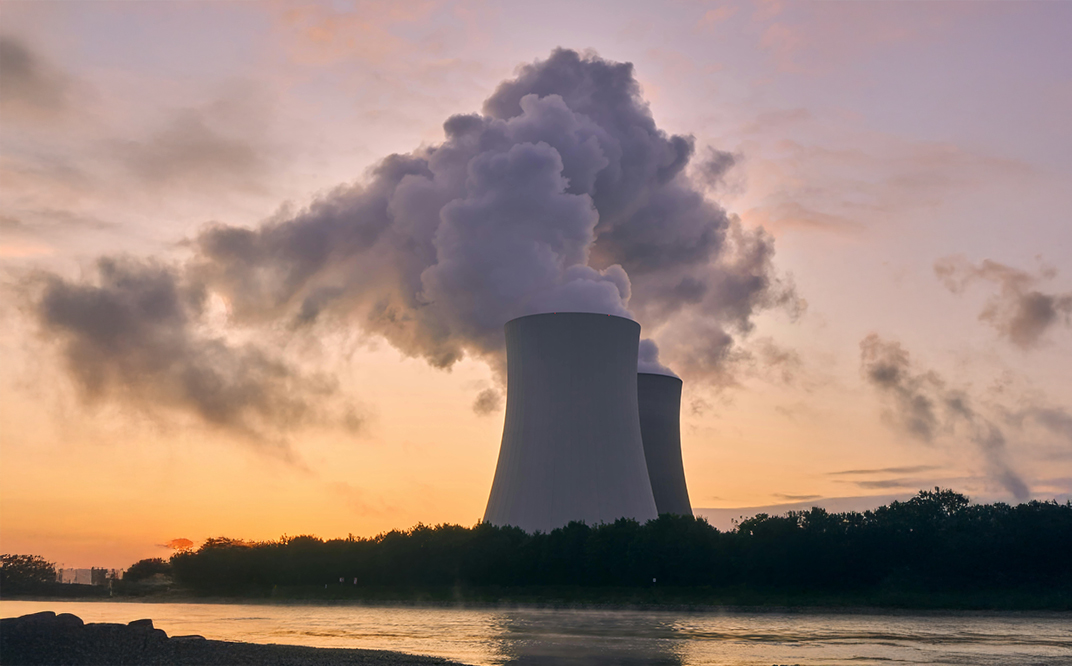LCA Life Cycle Analysis – What is LCA?

The significance of sustainability is increasing to eliminate the adverse effects of the industrialized world on the environment. This is where Life Cycle Analysis becomes significant in helping companies develop eco-friendly policies. Life Cycle Analysis, also known as Life Cycle Assessment, is an instrumental analysis for the quantitative determination of the environmental impact of products. Let’s examine the stages of LCA and the benefits and challenges of this practice.
Why do a LCA?
LCA is an analysis used to evaluate potential environmental impacts, including natural resource acquisition, production, consumption, and waste management, such as recycling and disposal. Goods, technologies, and services are all part of the scope of the product definition. LCA is a comprehensive assessment that considers multiple environmental aspects and takes a product life cycle perspective. These features of LCA prevent the transfer of problems between life cycle stages or during the transition from one ecological impact to another.
LCA Stages / How are LCA Studies Prepared?

LCA studies are conducted through 4 stages based on ISO 14040 and ISO 14044 standards. ISO 14040 contains the guidelines for conducting a life cycle assessment. ISO 14044, on the other hand, specifies the requirements in detail, showing the impact categories, category indicators, and characterization models required to conduct an LCA. The stages are as follows:
1. Define purpose and scope
LCA studies begin by defining the purpose and scope. The product, company, or service to be analyzed is outlined, and the study’s objectives are established. There are three crucial functions in shaping the purpose and scope:
First, it determines what is being assessed, why it is being assessed, and the purpose of the assessment. Objectives may include obtaining environmental information, designing greener products, or complying with regulations. Defining the objectives can help set more precise goals when developing LCA strategies.
Second, the scope of the assessment is determined. Everything used to make a product is produced elsewhere. These materials also require other inputs, and so on. This value chain can be profound. It is, therefore, necessary to decide what information to collect in detail and at what point to move on to general information. Because theoretically, such analyses remain open.
Third, the life cycle model to be used for the assessment is determined. Two different models can be identified here: cradle-to-grave and cradle-to-gate. The cradle-to-grave model shows a product’s process and recycling potential at the end of its life, while the cradle-to-gate model shows only the effects of production.
2. Inventory Analysis
Data necessary for the LCA study is collected during the inventory analysis phase. This phase aims to evaluate the environmental impact of products or services. Inputs, such as energy and raw materials consumed throughout the product’s life cycle, and outputs, including emissions and waste, are identified and quantified. Flow diagrams can be utilized at this stage to systematically represent the inputs and outputs involved in producing products or services.
3. Impact Assessment
Inputs and outputs collected from the inventory analysis are used for impact assessment. Indicative results for all impact categories are described in detail. Impact categories are assessed through normalization and weighting to demonstrate environmental impact.
4. Interpretation
Interpretation is the final and most critical stage of Life Cycle Assessment (LCA). The impact assessment results are transformed into meaningful insights and practical recommendations at this stage. Areas for improvement can be identified, and corresponding recommendations can be developed. Additionally, uncertainties arising from inventory data and emission factors should be carefully considered when evaluating and interpreting the results.
LCA Impact Categories
The impact category groups different types of emissions under a single heading based on their environmental impacts. These emissions appear in various forms and formats, as emissions from raw material extraction differ from those generated during electricity production. The LCA impact categories can be listed as follows:
Climate Change
Also known as global warming or carbon footprint, this category is based on measuring greenhouse gas emissions such as CO₂ and methane. Increases in atmospheric carbon dioxide and other greenhouse gases cause the Earth’s atmosphere to trap more heat, leading to global warming. The rise in greenhouse gases negatively impacts human health, agriculture, water resources, forests, wildlife, and coastal areas, all of which are vulnerable to climate change’s effects.
Eutrophication
Eutrophication refers to enriching freshwater ecosystems with nutrient elements, primarily due to emissions of nitrogen—or phosphorus-containing compounds. This nutrient overload can lead to undesirable changes in aquatic and terrestrial ecosystems, such as excessive biomass production and harmful algal blooms. In marine ecosystems, increased biomass can lead to lower oxygen levels, severely affecting water quality and aquatic life.
Acidification
It indicates the potential acidification of soil and water due to releasing gases such as nitrogen oxides and sulfur oxides. Possible effects of acidification include fish kills, deforestation, and degradation of building materials.
Smog Formation
Smog formation, also known as photochemical ozone formation, is an indicator of gas emissions that contribute to producing photochemical ozone catalyzed by sunlight in the lower atmosphere. Ground-level ozone is harmful to human health, ecosystems, and crops.
Particulate Matter Emissions
It measures particulate matter emissions from fuel combustion, wood burning, dust particles from roads and fields, and precursors of secondary particulates like SO₂ and NOx. Particulate matter can have harmful effects, including respiratory diseases and an increased risk of overall mortality.
Types of LCA
LCA studies can be carried out in 3 different types:
- Cradle to Cradle: This encompasses the entire process, from obtaining raw materials to recycling them at the end of their life cycle.
- Cradle to Grave: Covers the entire process, from obtaining raw materials to disposing of waste.
- Cradle to Gate: Covers the process from obtaining raw materials to delivering products to consumers, including activities such as transportation.
Conceptual Life Cycle Assessment

Conceptual life cycle assessment is the most basic and fundamental type of LCA. It offers an initial evaluation of a product’s or service’s environmental impact using limited data, providing a high-level overview rather than an in-depth analysis.
The results of a conceptual LCA are typically presented in brief statements or simple graphs. These reports are designed to quickly convey key environmental information to stakeholders, emphasizing the processes or materials with the most significant environmental impact.
Simplified Life Cycle Assessment
A simplified life cycle assessment (LCA) offers more detail than a basic conceptual LCA by evaluating a product’s or service’s environmental impact in greater depth. It aims to predict ecological outcomes using general data and standardized modules.
This approach involves a semi-quantitative assessment, relying on pre-existing databases and industry standards that provide general figures on the environmental impacts of specific processes or materials. These figures are then applied to the product or service being evaluated.
While a simplified LCA provides more detail than a conceptual LCA, it still lacks full specificity, as it does not consider each product or service’s unique attributes. However, it is widely used for initial environmental impact assessments because it provides a middle ground between detail and complexity.
Detailed Life Cycle Assessment
The most comprehensive form of life cycle assessment is a detailed one. It involves specific research and data collection tailored to the product or service. Impacts are comprehensively analyzed and categorized, and results are interpreted in depth.
What are the Advantages of LCA Studies?

Life Cycle Assessment (LCA) provides significant benefits in achieving sustainability goals such as:
- A Quantitative Foundation for Sustainability Strategy:
LCA provides a quantitative foundation for sustainability strategies, making it a valuable tool for tactical decision-making. LCA assesses the use of raw materials, energy, and water in production processes, along with the resulting carbon emissions and waste generation. With this comprehensive approach, it becomes possible to identify the stages in a product’s life cycle where resource and energy use is most intensive and where the environmental impact is the greatest. This insight facilitates improvements in product design, the development of alternative supplier options, and the identification of necessary changes in operations or supply chains. Additionally, LCA studies can help organizations set and optimize various sustainability goals, focusing on energy efficiency and reducing carbon footprints.
- Insights Derived from LCA
The results obtained from an LCA provide valuable insights for driving informed innovation. Evaluating the supply chains of materials helps identify those with the highest potential for environmental impact. LCA studies offer an opportunity to compare and test alternatives for products composed of multiple materials. These findings establish a science-based foundation for improving alternative production processes. Furthermore, they encourage collaboration with suppliers and joint R&D efforts to enhance the environmental benefits of innovation.
- LCA Enhances Transparency and Credibility
LCA promotes transparency, enabling customers to make informed decisions. Providing environmental data about products strengthens a company’s credibility and fosters greater customer loyalty. Life Cycle Assessment enhances brand value and offers a competitive edge within the industry. By highlighting a commitment to authenticity, integrity, and reliability in sustainable production, LCA underscores a brand’s dedication to sustainability. Data-driven transparency sets a brand apart from competitors, highlighting its unique environmental efforts. Additionally, LCA delivers robust supply chain insights, effectively communicating the positive environmental attributes of products and building trust with stakeholders.
- LCA is a Valuable Opportunity for Corporate Social Responsibility
Corporate Social Responsibility (CSR) demonstrates a company’s commitment to sustainable practices and can significantly enhance its social and environmental contributions. LCA offers a powerful tool to align a company’s operations with CSR goals, providing measurable insights that help improve environmental performance and support corporate responsibility initiatives. By integrating LCA into its sustainability strategy, a company can effectively showcase its dedication to environmental stewardship and social impact.
- LCA Helps Ensure Compliance with Regulations
LCA standards align with the latest global and regional sustainability reporting developments. By supporting sustainability reporting, LCA ensures that companies adhere to key regulations, such as the Corporate Sustainability Reporting Directive (CSRD), the German Supply Chain Act, and the Green Claims Directive. This alignment facilitates compliance and strengthens a company’s credibility and transparency in meeting regulatory requirements.
- LCA Enables Supply Chain Optimization
Life Cycle Assessment extends beyond a single product or process, encompassing the entire supply chain. It assists organizations in evaluating the environmental impact of their suppliers, enabling them to make informed decisions during the supplier selection process. By considering the life cycle of inputs and outputs, LCA helps identify opportunities for collaboration, innovation, and improvement throughout the supply chain. This holistic approach supports sustainable supply chain practices and drives continuous improvement.
What Are the Challenges of LCA Studies?

Life Cycle Assessment (LCA) is a vital tool for product sustainability. It offers comprehensive insights and valuable data across an organization, from product design and R&D to resource management, supply chain operations, marketing, and public relations. Additionally, LCA presents opportunities for integrating sustainability into strategic management. However, conducting an LCA study comes with its own set of unique challenges.
For an LCA study, data collection involves incorporating every supply chain component to measure the production processes’ environmental inputs and outputs. This can be time-consuming and resource intensive. Innovative or alternative materials often have unique production processes, which, due to proprietary technologies, may require additional time and effort to gather data.
A further challenge is the need for more current and high-quality data. This issue is particularly problematic in fields like construction, where materials, production processes, and environmental regulations often undergo significant changes over extended periods. The dynamic nature of some industries makes it difficult to obtain up-to-date and comprehensive datasets, which are essential for conducting thorough LCA studies.
QuickCarbon, compliant with standards such as ISO 14064-1:2018 and the GHG Protocol, offers efficient solutions for managing carbon emissions. Our user-friendly software simplifies carbon footprint calculation and reporting processes with web-based access, secure data storage, real-time reporting, and easy data entry. Discover how QuickCarbon can help you manage your company’s environmental impact and achieve your sustainability goals.